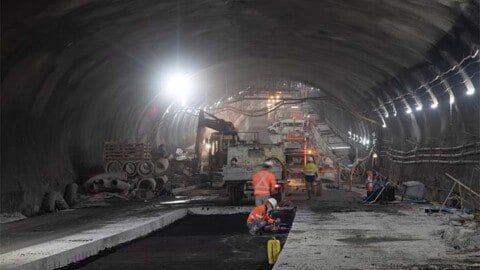The Victorian Government is undertaking the state’s largest review or traffic light sequencing as part of a $340 million package to increase space on the roads.
Traffic lights are being analysed and updated to optimise flow, with signals assessed at 759 lights across 170 intersections in hotspots across Melbourne.
The major boost comes in addition to the more than 450 new traffic monitoring cameras which have been added to the network to identify issues and clear up bottlenecks.
VicRoads is installing almost 700 new high-quality cameras to arterials across Melbourne, more than doubling the existing network of about 600 cameras.
The existing cameras are mostly on freeways, while the new cameras are on arterial roads and will provide greater real-time monitoring capacity.
Victorian Minister for Roads and Road Safety, Ben Carroll, said, “From the largest traffic light review in Melbourne’s history to new cameras and smart pedestrian crossings, we’re leaving no stone unturned to ensure Melbourne’s busiest roads are ready.
“Greater visibility across the network allows us to dispatch crews and clear disruptions faster than ever before, meaning safer and more reliable trips for drivers.”
More crews also are now patrolling the roads thanks to newly-delivered incident response vehicles which are responding to crashes, vehicle breakdowns and other incidents as well as clearing debris and chemical spills to keep traffic moving.
Eleven of 24 new permanent electronic message signs are in place relaying vital messages to drivers, warning of incidents ahead and suggesting alternate routes to save time.
Dynamic pedestrian crossings which can tell how many people are waiting to cross and adjust in real time are also being rolled out, with 16 of 75 already in operation.
The level of traffic on Melbourne’s roads dropped to as low as 45 per cent of normal during Stage 4 restrictions in August 2020, and has steadily climbed over the early part of 2021 to approximately 95 per cent of normal levels.
















Has any cost benefit analysis has been made, proper tender process been adopted in spending such a huge ticket item or will it become another Hotel Quarantine / traffic speed camera roll out fiasco?
Melbourne’s traffic control system was based on Sydney’s SCATS platform – developed in the late sixties into the seventies.
It was a great concept, but for whatever reason, has dropped behind the needs.
There is one fundamental flaw to all the current systems (other than the most complex optical/visual), and that is monitoring the traffic flow as it enters a junction rather than leaving it.
The original premise was to activate pedestrian crossings, which it does well, but with evolutions in urban design this fails the requirements today.
Back in 1988, I developed and prototyped a platform called CARS (computerised adaptive routing system), which implemented these ‘forward’ thinking algorithms with a number of benefits beyond traffic flow control !
It was torn down by the three major international incumbents, because of their market strengths and the long lead time for effective implementation.
One of the stories of my life.